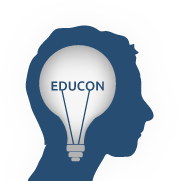Developing Best Practices for Budget-Conscious, Non-Proprietary Physical Computing & Robotics Courses
“STEAM” is a well-known buzz word in education today. Most schools have no problem satisfying the Science, Art, and Math portions of the acronym, but often struggle to include Technology and Engineering into the equation. Perhaps the biggest hurdle is finding a coherent curriculum that integrates them all while maintaining the thoroughness deserving of each discipline. This conversation describes the 18-year development of the Physical Computing & Robotics (PC&R) curriculum at a grades 9-12 school in Bucks County, PA. We will explain why the popular FIRST, LEGO, and VEX platforms did not fit within our long-range goals, and how a PC&R program can be started at a cost of roughly $200 per robotic platform and maintained with potentially no annual cost. We will share our successes and failures and hope that others will do the same.
Participants will have time to write code to control non-proprietary, Arduino-compatible microcontrollers and robots. These devices paved the way for the development of textbooks and a curriculum that integrates art, science, mathematics, and engineering under the technology envelope. Participants will be given access to all the textbooks and curricular materials developed for our PC&R course, as well as a list of tools, laboratory equipment, and supplies that keeps costs low while providing every student with their own scalable, autonomous robotics platform. For those who are just starting a robotics program and for those who would like to augment their existing program, we hope to foster discussions regarding which devices are considered indispensable, which are desirable, and which are luxuries.
Conversational Practice
After a conversation about the evolution of our Physical Computing & Robotics classes, participants will have time to write code to control microcontrollers and robots made available by the presenters. Here, participants will learn how easy it is to read sensors, grab user data from the keyboard, control a tri-color LED, make a robot move, and program it to think. During this hands-on session, we hope to sprout discussions regarding in-house hackathons, internal and external competitions, collaborations between students and across disciplines, STEAM curriculum, etc. We believe that with thoughtful implementation, Physical Computing & Robotics can be fun and attractive to students without being flashy and gimmicky, and it can provide a pathway to the AP Computer Science Principles exam and future endeavors in college and in the workplace.
Conversation Links
-
Alexandra Spencer
-
Howard M GlasserGeorge School
-
Usmonjon Muminov
-
Justin SeaboltAssistant Principal, NeoCity Academy
-
Hadley FergusonEdcamp Foundation
-
Chris OdomGeorge School
-
Dallas BeckerPhorms Berlin Süd
-
Liz BurianekWorcester Academy
-
Jenn NiroBerlin High School
-
Chris ChampionWest Shore School District
-
Kara Newhouse
-
Erica BartosWorcester Academy
-
Maciej DziedzicUniversity of Pennsylvania
-
Chris AlfanoSLA, Jarvus
-
Colin SamuelThe Brearley School
-
Meredith MartinSLAMS
-
Maya CrosbyAllendale Columbia School
 EduCon 2024
EduCon 2024
No comments have been posted yet.
Log in to post a comment.